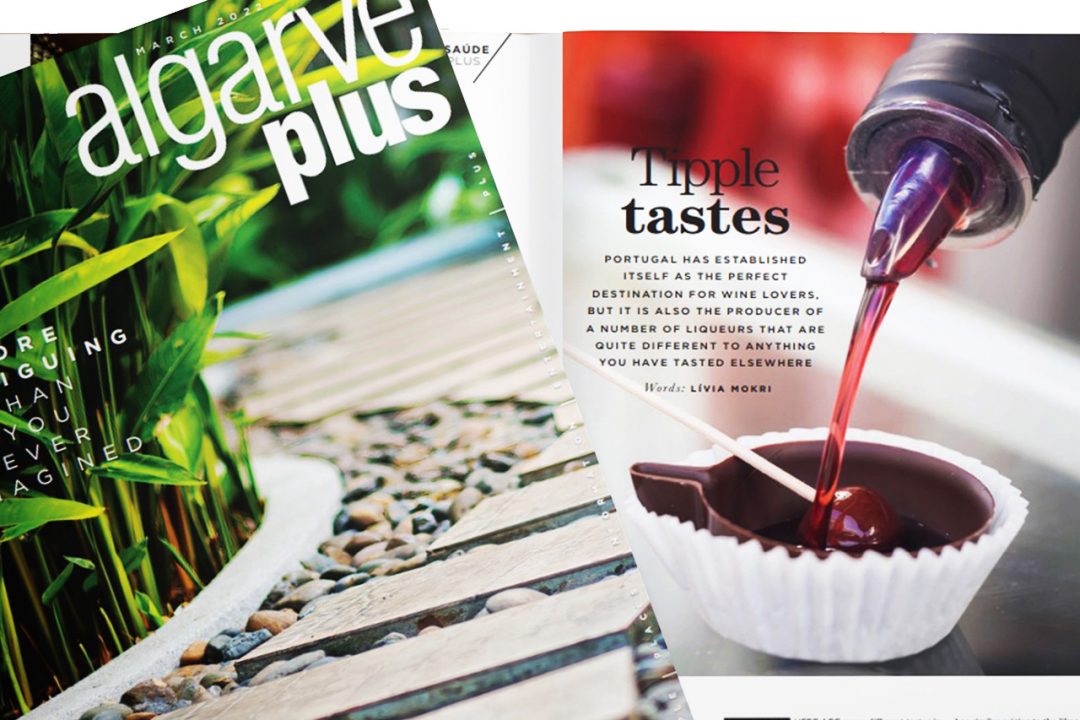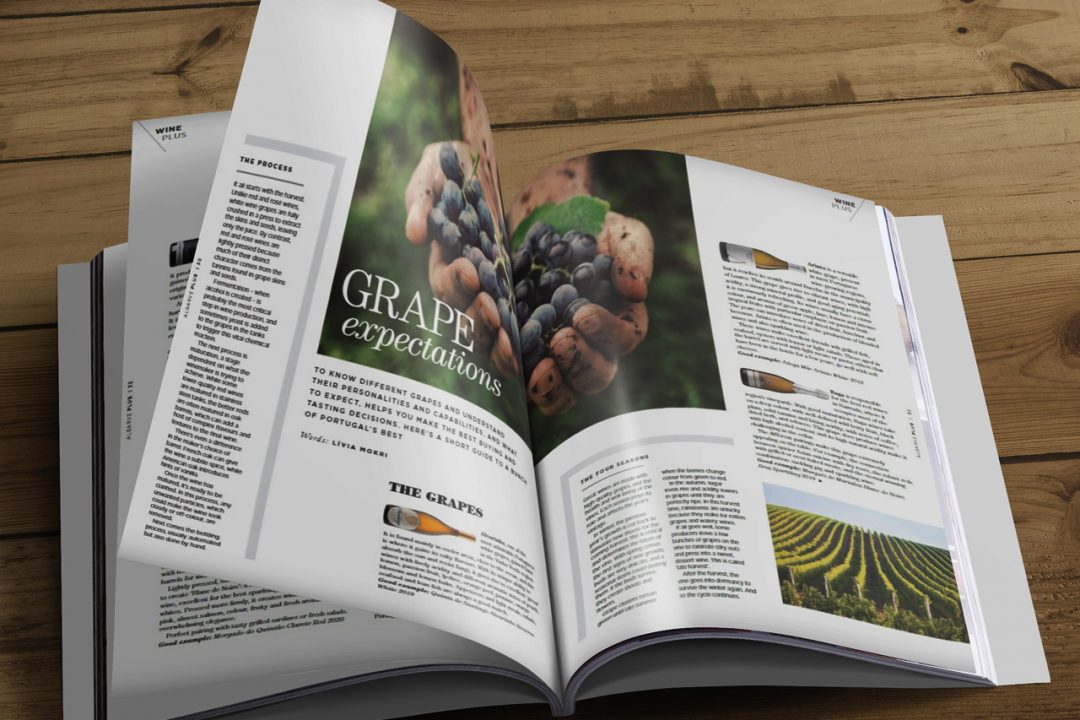GO GREEN – A light, bubbly, crisp white Vinho Verde is the perfect drink for this time of the year.
Lagoa hosted the yearly Wine Show again, with the important Algarve Wine Contest 2022. Find the details and the list of awarded wines in my other writing for the magazine.
Twist and shake! It’s time to mix a refreshing cocktail in the comfort of your home and enjoy this warm summer next to the pool. Find some recipes of long-established favorites in the magazine.
And did you know that the beaches in the Algarve are continuously awarded as the best ones in Europe? In an other article, read our offers for the best beaches to enjoy this summer!
I am happy to share that the July issue of the Algarve Plus Magazine has already been published, with my new article!
The magazine is readable online or downloaded for free here.
Enjoy!
Or read here the whole article:
Go green!
As the weather warms up, you may find yourself walking into a wine shop and instinctively grabbing for a tall, thin bottle, tinted green and sealed with a screw top. On a summer afternoon, a light, bubbly, crisp white Vinho Verde wine is really the perfect drink and fantastic dinner wine.
But what to know about these excellent world-famous Portuguese wines?
The region where these wines are produced is located in the lush, green, rolling hills of northern Portugal. It starts just below the Portuguese-Spanish border and extends all the way to the Atlantic Ocean, where it meets with the city of Porto. The origin of name Vinho Verde refers to the brightly green, mountainous-hilly natural landscapes of the region, which remain predominantly green even in winter. The region is also fairly wet and rainy, as two rivers run through it, the Douro and Minho.
Vinho Verde is the largest and one of the oldest demarcated wine regions in Portugal (and also in Europe) from where the wines were already exported before the Douro wines, in the 16-17th century, frequently to Northern Europe, mainly the United Kingdom.
Wine in Portugal is part of daily life, and many families have a small plot of land where they grow grapes. All over the Vinho Verde region, you’ll see grapevines hung in the beautiful Pergola style, draped high above where the cool breeze protects them from moisture and mold.
Most Vinho Verde is a blend of white grapes, all indigenous to Portugal, mainly made from the local Alvarinho, Loureiro, Arinto, or Trajadura grape varieties. But there are two predominant grapes that winemakers are starting to see as more interesting than the others: Alvarinho and Loureiro. Many winemakers in the region have begun making monovarietal wines from these two grapes, with very good results.
About 86% of Vinho Verde wines are white ones, which are usually consumed at a young age. They present intense, yet delicate acidity and are harmonious taste, with rich fruity and floral aromas depending on the grapes used, the intensity of which shows a strong freshness in each sip. These wines are lemon or straw yellow in color, have an alcohol content of about 8.5-11% and are mainly made from local Alvarinho, Loureiro, Arinto or Trajadura grape varieties. Very refreshing and balanced wines.
Alvarinho is the most emblematic grape in the area, mostly in the Monção e Melgaço sub-region.
The grape generally has a lower yield and can achieve higher alcohol levels (11.5-14%). The grapes produce full-bodied, dry wines with complex, delicate, fresh aromas. It displays tropical aromas and an overall lemony character with characteristic minerality, slightly salty properties, and high acidity as well.
In the sub-regions to the south of Monção e Melgaço, around Lima, the main grape variety is the fine Loureiro, which is the other most famous and popular white grape variety in the region. This grape has a higher yield and gives very aromatic, fresh wines, often with citrus and floral aromas, and also with high acidity.
Good example: Quinta do Ameal Escolha White
Many of the Vinho Verde wines out there have a light fizz that can be extremely refreshing. Originally, this is caused by the carbon dioxide that is a natural byproduct of fermentation and was trapped in the freshly fermented wine during bottling. But these days, winemakers add it to boost carbon dioxide as well because they know that drinkers abroad have come to associate the Vinho Verde wines with light bubbles.
But many Vinho Verde wines don’t have any spritz, at all, and if you try them you’ll find that the acidity and minerality of the wine shine through even more when those bubbles aren’t present.
The not-young but aged Vinhos Verde wines have a golden color, with aromas of more ripe fruit such as quince and honey. In the mouth, we have more complexity and structure, a rounder, plumper, and persistent wine.
But Vinho Verde region produces not only white wines but rosé and red ones as well.
Vinho Verde rosé reveals a slightly pink or intense color, with young, fresh aromas, reminiscent of red fruits. The taste is harmonious, fresh and persistent.
Good example: Covela Rosé
The most successful blue grapes in red Vinhos Verde wines are Vinhão. The wines made from this grape are deep red, almost purple, pink foaming, and more tannic, with aromas of wild fruit with striking acidity and intense freshness. Red Vinho Verde wines are also considered gastronomic wines because of their complex aromas they can be well harmonized with local dishes.
Good example: Anselmo Mendes Vinhão Red
Sparklings have also been produced in the region since 1999 and, due to its natural conditions, this region is one of the most promising places for quality sparklings. The sparkling Vinho Verde wines also have a typical profile of the region, with enhanced aromatic freshness and more complex flavors. In their case, only the sweetness of the wine changes, depending on the concentration of residual sugar and the aging time spent in the bottle. The consumption preference dictates the choice, from a Natural Brut to sweet sparkling wine, or between a Reserve to the Grande Reserva.
Good example: Soalheiro Espumante Brut Alvarinho
Light, fresh, young, and pleasantly aromatic Vinho Verde wines are suitable for all occasions: a sunny picnic, a restaurant meal or a romantic evening.
All over Portugal, seafood is the dominant cuisine, particularly the meaty white bacalhau (codfish). One of the most typical regional dishes is creamy rice with hunks of cod, monkfish, or shrimp. White Vinho Verde is high in acidity, which makes it ideal for pairing with all forms of seafood. And these times, in the sardine season, this wine is an excellent choice for these grilled fish as well.
These light and fresh Vinho Verde wines also pair perfectly with light, fresh dishes with subtle spices: a summer salad with fruits and shrimp, cream cheese crackers with salmon, or sushi, for example.
And these wines are great for vegetable dishes, or even citrus sauces and Asian dishes as well.
The fact is, Vinho Verde is great by itself, but if you are looking for an affordable white wine that’s delicious with light foods and all manners of sea creatures, you’ll definitely have a perfect pairing with this crisp, bright juice.
But be sure to consume these wines chilled!
And why not discover the place where these beautiful wines are birth?
Vinho Verde wines are unique in the world and provide an excellent reason to explore the region, which makes the wild landscapes floating in the green, a unique region of Portugal. Here is one of the largest nature parks in the country, the Peneda-Gerês National Park, founded in 1971. The very charming town of Ponte de Lima is attracted by old castles and a Roman bridge over the river Lima. Braga, the beautiful capital of the Minho sub-region, is known primarily for its churches, monasteries and shrines.
But the region also offers several different itineraries to explore, packed with wine tastings and visits to vineyards and wineries.
It is also worth traveling and exploring this wonderful part of northern Portugal.






No Comments Found